#bitter rice
Explore tagged Tumblr posts
Text



Bitter Rice (1949)
421 notes
·
View notes
Photo

(via Film Noir Photos: Inside Looking Out: Silvana Mangano)
Bitter Rice (1949)
22 notes
·
View notes
Text




Films seen in 2024: Bitter Rice (1949, De Santis)
26 notes
·
View notes
Text

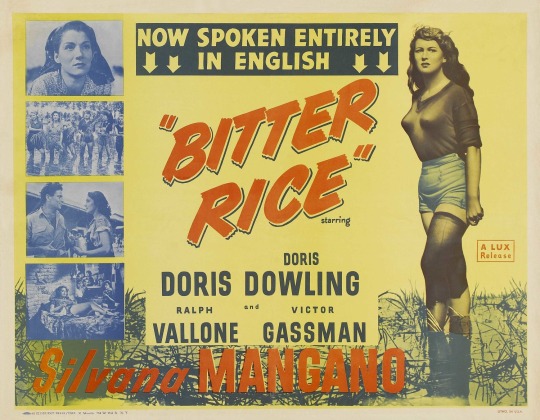
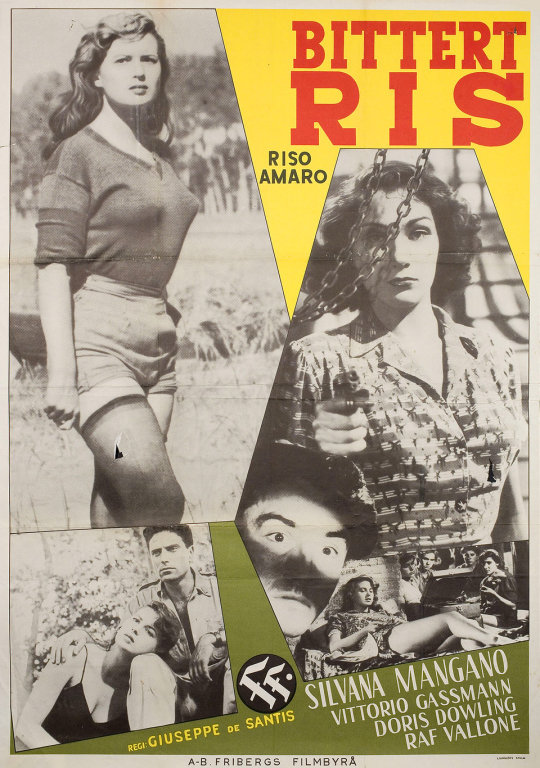


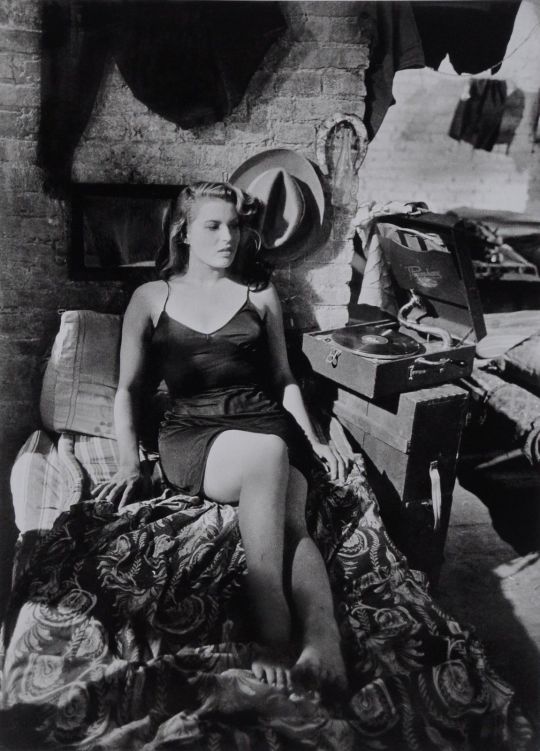




Bitter Rice (Riso amaro) (1949) Giuseppe De Santis
December 6th 2023
#bitter rice#1949#Riso amaro#giuseppe de santis#silvana mangano#doris dowling#vittorio gassman#raf vallone
10 notes
·
View notes
Text
CC's New Watch Ranking - April 2023
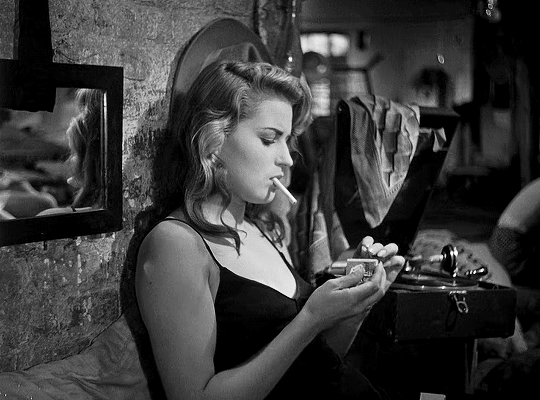
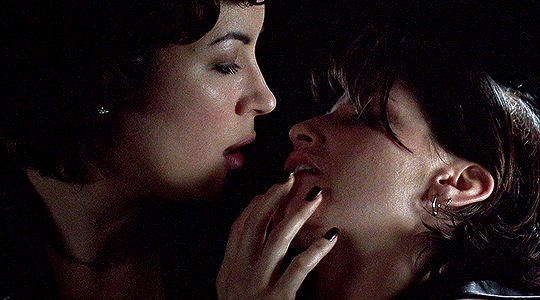

Every month on Letterboxd, I make a list of the 10 best films I’ve seen for the first time. It’s a fun way to compare movies separated in time, genre, and country of origin, and helps me keep track of what I’m watching! This is a breakdown of those films.
April! An early heat wave broke and gave us the rainy, misty days that this month is supposed to contain. My vegetable garden is starting to take root. This is the first year I’m planting in earnest, prepping trays of seeds to make their way outside. I’ve been learning a lot, and keeping my eye on the backyard window as I’ve been settling in to watch these films. Plants like music - do they like film scores? Maybe I’ll take my speakers outside and find out. I bet they’d love Angelo Badalamenti, whose work is featured heavily in this month’s list. After a slow start due to several exciting new work opportunities (yay!), this month ended up containing some cinematic heavy-hitters!
Click below to read the breakdown! Click HERE for the list on Letterboxd!
10. The Hawks and the Sparrows
1966 - Pier Paolo Pasolini

A delightful absurdist tale by one of Italy’s greatest directors. A father and son, whose attitude seems ripped right out of Waiting for Godot, wander a road with indeterminate purpose. Along they way they meet a philosophizing talking bird, and fall backwards in time to the life of St. Francis. Interspersed are some scenes of modern (1960s) Italian life, including the real funeral procession of a Communist leader. It’s a strange, lopsided work, perhaps not achieving the thought-provoking or artistic heights that the director intended, but contains some brilliant gems of absurdism. I’m particularly struck by several shots and discussions that focus on the Moon. You may know, reader, that I am obsessed with Fellini’s Voice of the Moon. That is an absurd, wandering meditation on the moon’s symbolism and power, and echoes of those ideas are found here, too. It gets me wondering about what Fellini and Pasolini shared, the experiences that united their thought, and got them to create such interesting, parallel pictures.
9. For a Few Dollars More
1965 - Sergio Leone

Impeccable craft. The platonic ideal of a Western that so many movies/other media try to grasp, but can never quite achieve. (Looking at you, Mando.) While The Good, The Bad, and The Ugly might be the ultimate piece in this trilogy, For A Few Dollars More still manages to hold all the compelling, subtle characterization and breathtaking conclusion that makes that capper so legendary. Two bounty hunters seek out a mad fugitive - they all double-cross one another in pursuit of victory. There’s just grand vibes within this thing. A legendary score, gorgeous shots, handsome sweaty men trying to kill each other (aka flirting), and other tiny design choices that are beyond iconic. What’s not to love? Toss this on with a bourbon, pardner, and watch them shoot a hat.
8. Bitter Rice
1949 - Giuseppe De Santis

What if we fought back against systems that oppress the workers of the rice fields AND we were both girls 👀. First and foremost watch this if you love wlw - there is some subtext that occurs between the main pair as they squabble. A jewel thief, coerced into crime by her shitty boyfriend, hides out among rice workers with her stolen goods. She meets Silvana, a peasant who catches onto their scheme and ultimately gets entangled in their lives. It feels like both the thieving pair lust after her. The politics of this one are messy, to say the least. Francesca, the thief, sides with some scabs who want to work the fields despite not being part of the union. Silvana organizes the workers against them, but ultimately they come to a patronizing compromise to let both sides work together. The film doesn’t care about the details that would make this labor struggle real - what does it take to join the union? Who organizes it? Do the members get to vote about how they feel about the scabs? Pulling those threads makes the movie collapse, along with the shoe-horned melodramatic ending for Silvana, which seems born out of an American Hayes Code sense of what must happen to a woman who "chooses wrong." Despite these elements, the film is shot beautifully by Otello Martelli, Fellini’s cinematographer, and contains one of the greatest framing devices for a neorealist film ever devised. A voice over telling you that what you’re about to see is the real testimony of rice workers, which diegetically shifts into a radio announcer present at the scene, is inspired. A film to yell at as you enjoy it.
7. Touch of Evil
1958 - Orson Welles
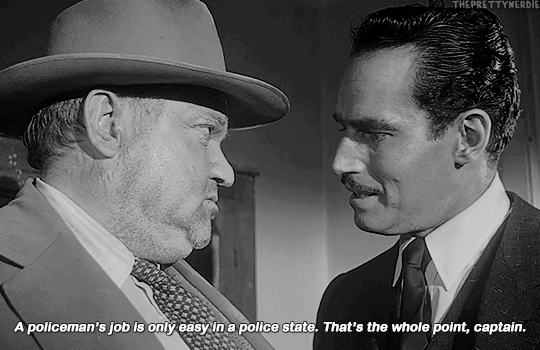
The film opens with a bomb being place in the boot of a car. Then there is an unbroken shot lasting about 5 minutes of that same car driving slowly through a crowded street. It is breathtaking tension building. Hitchcockian perfection. What follows is a surprisingly nuanced exploration of police corruption. These pigs live in paranoid fantasies sustained by evidence that they plant - hatred, ignorance, and alcohol let them forget that they created the justification for their hate themselves. This film drips with noir style and culminates in a chase scene that’s just as satisfying as the end of The Third Man. Who else understands noir like Welles? He gives a remarkable performance here.
6. Inland Empire
2006 - David Lynch

Lynch was doing creepypasta lo-fi found footage before it was cool. Seriously, watch this film and be surprised that this came out before Marble Hornets! Lynch’s first foray into digital filmmaking follows the story of actor Nikki Grace, played by the inimitable Laura Dern. (Consider her!) She is cast in a film that she later discovers is an adaptation, derived from a production that was shut down due to strange events happening to the cast. This grounded framing quickly dissolves into classic Lynchian surreality. The narrative is intersected by stories of 19th century Polish sex workers, modern day drifters, an unnamed woman who watches the film’s events on a TV screen, and more flashes of disconnected images than I could ever try to remember. Terry Crews is there for a few minutes. Lynch’s films defy simple explanation, as their very structure seems to repel logical attempts to define them. It is enough to say that this all builds into a moving tale of the exploitation built within the Hollywood machine. To be an actor, even with all the progress we’ve made, is to give yourself up to depersonalization, to completely vanish in the eyes of the viewer. Audiences want to see a self that is inside you, but is not you. You can get lost pulling on that thread. And there are dark figures who are only too happy to encourage you to get lost, who want to sit behind a camera and watch your selves separate, so they can bottle it up and sell it for massive, massive profit. Fascinating to see such a film come from Lynch, who by all accounts is a highly ethical filmmaker and whose crews (particularly Dern!) adore working with him. I think it takes a fundamentally good and kind person to truly understand evil - they must have the good grace to recognize what lives within them, what lives within all of us.
(Also, these fucking rabbits terrify me in ways that I'm still understanding. I think I saw the short film Lynch made with them while I was under the influence of certain substances. They know what I'm thinking and will show up at my doorstep one midnight, I just know it.)
5. Lost Highway
1997 - David Lynch

Whereas Inland Empire explores the loss of self that’s a feature (not a bug) of acting, Lost Highway explores a broader loss of self that can happen any time, anywhere, to anyone. Recapping the plot, again, seems a little pointless, but in brief, it’s about a jazz musician who appears to be stalked by a shapeshifting entity. As he tries to understand why he’s being targeted, he gets arrested for (apparently) murdering his wife - but while in jail, he mystically transforms into another person entirely. This new character lives an entirely separate life that eventually intersects with the original one in shocking ways. It’s all very cyclical, and vague, and contains a host of implications that are too broad to clearly explain. Lynch is the ultimate Oneric filmmaker in this way - the content of the dream is so different than the lasting impression it gives you. Towards the beginning of the movie the main character has this exchange:
Fred: "I like to remember things my own way"
Cop: "What does that mean?"
Fred: "How I remember them, not necessarily how they happened"
That’s the ultimate explanation of how these films function. They are truly symbolic masses that pass through you, live inside you, and then transform into something greater than its sum ingredients.
4. Bound
1996 - The Wachowskis
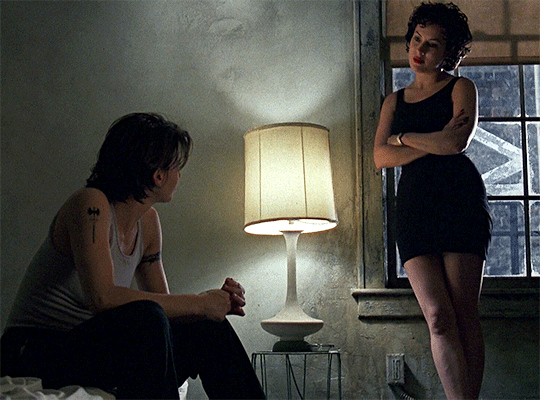
So after dipping our toes into that Lynchian, vaguely defined dreamscape, here we have a much more straightforward film. What if the hottest most gorgeous most sapphic most jaw-droppingly sexy women imaginable did a crime together??? Wouldn’t that be cool?????? There really isn’t much in the way of symbolic nuance in this picture like there is in some of these other recommendations. This is just a straight-forward, tightly constructed crime thriller, starring (cannot emphasize this enough) just the biggest queerest icons you can imagine. I knew this movie would rewire me once I saw it, and am pleased to report that it really, really has. If you’re in the sapphic camp please check it out - it’s as required viewing as But I’m A Cheerleader is. Corky is a stone-butch ex-con who’s hired to renovate an apartment. She discovers that living next door is a mobster and his disaffected trophy girl Violet. Violet seduces Corky in the most noir femme fatale porn-adjacent way imaginable - quite literally “can you fix my pipes?” - and the two agree to pull one over on the mob so they can run off into the sunset. What follows is tightly constructed, steaming tension, as Hithcockian in perfection as Touch of Evil’s opening oner, but with a little more pulpy crass. Gays and theys, please, do not hesitate to watch this. It’s the film that let the Wachowskis make the Matrix, it is truly that spectacular.
3. The Immortal Story
1968 - Orson Welles

Welles is a master storyteller, a magician, a ponderous and monologuing baron of Art whose work is now embedded in the history of this medium. When he’s not playing himself, he’s playing corrupt, ignorant men. What do you think compels him to do that? He had the power and resources to play anyone he wants - why was this the role he chose? These questions will naturally rise up when you’re watching The Immortal Story, Welles’ last feature fiction that he would ever direct. It follows the story of a wealthy businessman who has a meeting with his assistant late one night. The businessman - this baron - reveals that he despises fiction, and only wishes to tell or hear things that are true, like data in a ledger. But then he reveals a story a sailor once told him, about a wealthy man who once paid the sailor to sleep with his wife and produce an heir. His assistant knows the story; he says this is a common folk tale, repeated in every port, on every ship, and that his master is incorrect in believing he heard it from the person it actually happened to. This sends the businessman on an obsessed journey - he commands his assistant to recreate this tale, to hire a courtesan, to find a poor sailor, and reconstruct this tale exactly as it was told to him, line-by-line, so that… well, the baron’s reasons for recreating this tale are obscure. Obsession? Stubbornness? A late-life spark of creativity? These questions intermingle with the first few I proposed. What impresses me so much about this film is that it is Welles clearly exploring his own creative drive, questioning all the motivations that have driven him to the life he has been leading for decades. It’s an incredible meditation from one of cinema’s greatest filmmakers. I firmly believe it sets the ground for the future explorations of truth and fiction that Welles accomplishes in F for Fake. How appropriate that this is the capstone towards his fiction-telling career.
2. Mulholland Drive
2001 - David Lynch

The perfect fusion, and appropriate mid-point, between Lost Highway and Inland Empire. Lynch explores the fundamentals of identity as two people try to discover who they are within the mad dreamscape that is Los Angeles. A woman stumbles out of a car crash into the home of a newly-arrived dreamer, ready to go on an adventure and help this woman restore her identity. Or, perhaps the real story is that a jealous actress clings to a more successful starlet, but gets her heart toyed with and torn to pieces as part of some power-tripping game. Lynch is a master of montage, assembling seemingly random moments into a cohesive whole that leaves a distinct emotional message. The competing, lopsided, cyclical narratives that make up this film are no exception. All the cutaways to different characters that intersect with the main pair’s lives are incredible, too. This is the Lynch film that most feels like it captures life itself. Its many contradictions and absurdities, its passion and revulsion. The highlight is the scene where the protagonists sit and watch an underground show. “It's all just a recording,” the performer repeats. This film is just a recording. Our lives will become a recording, once we’re gone and can only be remembered by artifacts. In this moment the movie seems to speak to the viewers directly, reminding them that everything they’re watching is false - and they’re allowed to let it transport them to other realms, anyway.
1. The Music Room
1958 - Satyajit Ray

One of the things I like most about movies from before, say, 1975, is that they don’t mind really lingering in a certain mood. Much of this movie shows a bored man, descended from royalty, lounging around his dilapidated palace. He hides from responsibility, debts, and truths he’d rather forget. But one doesn’t get bored watching him linger. Almost like a survivor in a horror movie hiding from a monster, Biswambhar is actively hiding, actively moping and avoiding the reality of his situation at any cost. It is a remarkable effect. Biswambhar’s only passion in life is live music, and his music room is his treasure. When his family meets a tragic turn of fate, he is left alone in his palace, situated on a flood plain that will eventually sweep away all his land. He decides to spend the rest of his life waiting for the day, living on ever-dwindling reserves of treasure and sherbet. Destiny seems to call to him at one point, and he decides to spend the rest of his reserve on one final, grand act, like in the good-old-days. He hires a musician, invites all his neighbors, and acts like he hasn’t been a reclusive hermit for several years. We understand him the most in this moment. The way he lights up, reopening the music room. The fantasy he embodies. As the musician plays, and we linger in the majesty of her dance and the hammering tabla, we are mesmerized just as he is. Cascades of meaning become clear. This man has sacrificed everything just for this moment, has given it all away to live inside a happy bubble, shunning the outside world… and can you blame him? How can anything life offers compare to the astral travel music can provide? If only he could have found a way to balance his obligations and this passion. Maybe if he had been a musician himself. But no. He can only watch… just as we, watching this movie, are now. Satyajit Ray is a director most capable of making the audience question itself, whose films seem to provoke deep thought and lingering wonder long after the work is over. This film might be the greatest example of that ability. As our own world changes in uncertain times, with an unclear future, a film like this forces us to question just what we’re doing consuming so much media. Like Biswambhar, I think many of us are turning a blind eye to environmental change so we can linger in the happiness of the music room, too. That’s the lesson to take away from this film. One can’t live their life waiting for that room to contain magic once again…
~~~~~~~~~~~~~~~
Thank you for reading! If you liked any of these thoughts feel free to follow me on Letterboxd, where I post reviews and keep meticulous track of every movie I watch. Look forward to more posts like these next month!
#movies#film#cc oc#letterboxd#movie ranking#The Music Room#Mulholland Drive#The Immortal Story#Bound#Lost Highway#Inland Empire#Touch of Evil#Bitter Rice#For A Few Dollars More#The Hawks and the Sparrows
16 notes
·
View notes
Text

Criterion Designs: Bitter Rice by Ken Laager | Current | The Criterion Collection
Bitter Rice (Italian: Riso Amaro) is a 1949 Italian film made by Lux Film, written and directed by Giuseppe De Santis. Produced by Dino De Laurentiis, starring Silvana Mangano, Raf Vallone, Doris Dowling and Vittorio Gassman,
3 notes
·
View notes
Photo
Silvana Mangano & Raf Vallone in ‘Riso Amaro’ (1949)

5K notes
·
View notes
Text


Silvana Mangano in Riso Amaro (Bitter Rice)
0 notes
Text
This movie is gay af

0 notes
Text
Made my way to the coffee shop a couple of away from my place to buy dinner. Mum asked for the Saba Fish Bento from the Korean/Japanese stall. Half a pan-fried blue mackerel over a bed of shredded cabbages drizzled in teriyaki sauce occupied the largest compartment. White rice filled up the next biggest space with a side of kimchi and a lime.

Me went with the Economy Rice (菜饭) option and chose three dishes for my takeaway meal. Starting from the left to right, bitter gourd & egg stir-fry, stewed fried egg tofu and crispy chicken cutlet over white rice.

#Saba Fish Bento#Japanese#Korean#Blue Mackerel#Scomber australasicus#Fish#Kimchi#Lime#Economy Rice#菜饭#Bitter Gourd#Bitter Melon#Egg#Egg Tofu#Chicken Cutlet#White Rice#Takeaway#Packed#Dinner#Asian Food#Food#Buffetlicious
111 notes
·
View notes
Text
i say all this and don’t regret it, but the final film we watched was the 1949 italian flick bitter rice and it was EVERYTHING the rest of the festival wasn’t and absolutely exemplifies that venn diagram idea.
youtube
you want gender anxiety? class anxiety? copious amounts of female homoeroticism? labor struggles? a song battle about scabs? a musical number about a miscarriage? jewel thieves? a rice heist? the sluttiest man chest in the world? a torches and pitchforks frankenstein sequence? a shitheel getting meathooked by his two exes? a wedding? a beauty pageant? a lot of seductively bleeding men? a stirring anti-prison speech? some HOT dances? female catfights? male catfights? it’s all here baybee
we’re at this noir film festival and of the three four movies we’ve seen so far only one has been what i would consider a noir? like, i get why you might put them on the bill, but most of them have lacked the very specific type of *anxiety* that is central to the genre for me?
noir is the intersection of crime movies, melodramas, and horror, and if you drop out one of those elements you leave the genre. most of what we’ve seen hasn’t included the horror elements, and that’s crucial. it isn’t ENOUGH to make a black and white crime movie where things end badly, you need an element that evokes an almost supernatural dread, something that induces paranoia not just in the characters but in the audience, too. in american films this is usually gender and class anxieties in the wake of ww2, where the ground under the audience is unsteady because gender roles aren’t stable and class aspirations are both irresistible and unfulfillable, and most of the foreign films on the bill for us have missed those elements and haven’t replaced them with anything else
3 notes
·
View notes
Text





Bitter Rice (1949)
68 notes
·
View notes
Text


these came out SOOOO good
#they aren’t too sweet at all they have a slight bitterness and earthiness and a powerful dark cocoa flavor#and they are gluten free#they are made w rice flour so they are springy and light and have almost a mochi like chew#so so yum#personal#recovery#recipe
73 notes
·
View notes
Text
I ordered some seeds and the company sent me a little newsletter! With recipes! Very simple recipes, but I like it. Click through for recipes for Peanut Rice (!) and Bitter Greens with Peanuts, credit to Kuragi Co., Ltd. in Mie Prefecture.
Peanut Rice
360 g dry rice Peanuts to taste 30 ml sake 1 tsp salt Gomashio to taste (toasted sesame seeds and sea salt; available at Asian grocery stores or mix your own)
(1) Wash rice thoroughly, then mix with sake and salt in rice cooker. Add slightly more water than necessary.
(2) On top, add peanuts (without removing skin) to taste. Cook in rice cooker.
(3) When finished, sprinkle with gomashio and serve.
===========================
Bitter Greens* with Peanuts
*Specifically, 春菊 shungiku or chrysanthemum greens, but you could try spinach, mustard greens, broccoli rabe, whatever you have!
1 bunch bitter greens 20 g peanuts 1 tbsp dashi powder 2/3 tbsp soy sauce 1 tbsp sugar Salt to taste
(1) Wash greens thoroughly and blanch (add to a pot of salted boiling water, remove quickly, and rinse thoroughly in cold water to lose residual heat). When cool, wring out water and cut into 4 cm lengths.
(2) Chop peanuts roughly.
(3) Combine soy sauce, dashi, sugar, and peanuts, and mix well. Use as a dressing for greens.
#recipes to try#(← if you wanna block that tag for spam#i am cleaning out open tabs on my phone)#peanuts#rice#sake#gomashio#FOR THE OTHER#chrysanthemum or other bitter greens#peanuts again#dashi powder#soy sauce#sugar
15 notes
·
View notes
Text
I have a feeling I’m going to get ratio’d on my own poll given that tumblr consists of like. mostly white people but anyways!
ALSO PLEASE ADD YOUR ETHNICITY IF U RB
#the correct belizean answer is you dont put it away. or you do if u purposely cooked a lot#bc like if it aint hot as fuck it will not spoil!!! i have leaft meat out for days! my friends came at me for this when we cooked on a trip#and i didn't put the chicken in the fridge and left it on the stove overnight like!! bitch!!!#it was 40 degres out#ofc i dont need to put it in the fridge. and before yall quote food safety at me. they advise u not to wash ur chicken#i dont listen to them. i lsten to my superior stomach and the fact that i've only had food poisoning once in my life and that was from a#vendor that did tell us to be careful#so!!!#and my friends were fine#some of them got sick from smth ANOTHER friend cooked that i thought looked unsafe for other reasons#so!!#actually wait the answer for me is depends on what. bc i'll leave rice out longer than i'd leave fish or tuna. or veggies#but veggies is just bc it gets bitter when its left out
253 notes
·
View notes
Text
made jjajangmyeon for dinner today #awesome 😚
#with rice vermicelli instead of regular noodles because hashtag celiac warrior#i was scared when cooking the sauce because every recipe online said if you do it wrong the black bean paste can end up tasting bitter
9 notes
·
View notes